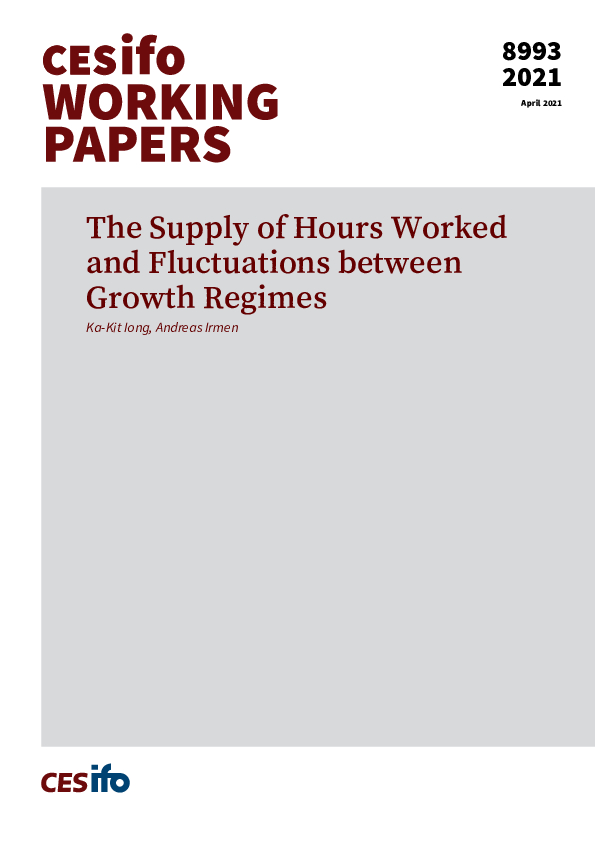The Supply of Hours Worked and Fluctuations between Growth Regimes
CESifo, Munich, 2021
CESifo Working Paper No. 8993

Declining hours of work per worker in conjunction with a growing work force may give rise to fluctuations between growth regimes. This is shown in an overlapping generations model with two-period lived individuals endowed with Boppart-Krusell preferences (Boppart and Krusell (2020)). On the supply side, economic growth is due to the expansion of consumption-good varieties through endogenous research. A sufficiently negative equilibrium elasticity of the individual supply of hours worked to an expansion in the set of consumption-good varieties destabilizes the steady state so that equilibrium trajectories may fluctuate between two growth regimes, one with and the other without an active research sector. Fluctuations affect intergenerational welfare, the evolution of GDP, and the functional income distribution. A stabilization policy can shift the economy onto its steady-state path. Fluctuations arise for empirically reasonable parameter constellations. The economics of fluctuations between growth regimes is linked to the intergenerational trade of shares and their pricing in the asset market.
Fiscal Policy, Macroeconomics and Growth
Empirical and Theoretical Methods